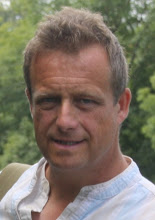


Here are three of the ten poems for Riversdale, in situ.
A journal of writings about landscape. Things I have written, fragments of other people's work, ideas, possibilities. I am aiming to develop these ideas as I go. This is a work in progress and a notebook.


A monologue written for the Knighton Serendipity Festival in July. I hoped to capture town mood and complexity, hidden lives, sunny cobbled yards and hot streets. In 500 words! Give or take. It is bright and breezy and draws heavily on Under Milk Wood, as a lot of writing does these days, from 'Penny Lane' to Alan Bennett.
See all of town from up here. Clouds on the hills, slow moving as old rivers, a Knighton day, bright as pies and dark as secrets.
Sun comes up, Young Evans is late for the late train - which is late. Lucky it’s late every morning.
Susan Jones and Wayne Thomas arguing again, look. She could do better. Give her a kiss, lad, say sorry.
There’s Mr Peter Harris from Barclays, smart as a new pin. Likes a sup with the lads, watches the match in the Plough on good days. Woke up in Swansea once dressed as a mermaid, they won’t like that in the bank.
Long Meg from the hill farm, in town for wine gums and dry peas. Turns at Tuffins, bumps into James Robinson, visitor, stout boots; quick sorry, walks on, never forgets her eyes.
Wayne Thomas, look, slouches by the clock tower, knows he’s in the wrong. Nods at Dai Redbrick, in town for his hair, fresh from the rolling fields, not used to dry land.
Lunchtime tummies rumble. Costcutter girls run ragged, sandwiches out by the gallon. Mr Pugh takes his pint in the George and checks his watch against Tom Brass the Milk.
Hot and quiet, hot and quiet. Asleep in the old school artists dream of paint and underwear. Bells ring quietly in antique shops. Stanley Paris trims Dai Redbrick, thinks of his watering. Mrs Billie Williams with her organics and her good skin, gazes lustful at Mr Hughes the Paint, working opposite. Really Mr Tom Lewis, on the run from another sour marriage. Waves a brush and plots escape.
Hot and quiet, hot and quiet. Three women off the Shrewsbury train, here for tea in the house at the top of the hill. Cousin Ernest, home on his half-day, thinks of cream cakes and cousins.
Hot blue sky and steep roofs. Mr Edwards’ cat, look, fast asleep above his geraniums. Children off the noisy bus, all suckipops and cigarettes like their parents, growing fast and thinking naughty. Costcutter girls are polite but firm, no alcohol sold and no more than three dozen in the shop at any one time. Poppi Thomas, does the cooking now their mother’s gone but no relation if you ask, calls in for fish paste and soap for tomorrow’s tea.
Those ladies have reached Cousin Ernest’s house, look, all out of breath with the view. Tea’s laid, scones and butter and jams. Staying over, are they, or heading for the late train?
Lamps being lit, pubs open again. Tom Brass early in the George. Wayne Thomas clutches Mr Edwards’s geraniums, off to do the Right Thing by Susan Jones. Mrs Billie Williams lays the table for one and thinks bad thoughts as Mr Hughes take his overalls down. Young Evans walks from the train past Mr Pugh, clicking the padlocks in the bank.
Night falls, soft as eyes closing. Tom Brass on his uncertain way home, waves unseen at Mrs Billie Williams. Stanley Paris falls asleep in his roses, dreams of razors. Wayne Thomas is forgiven, for the last time. Clouds on the hills, slow moving as old rivers, a do-nothing day, a Knighton day.


